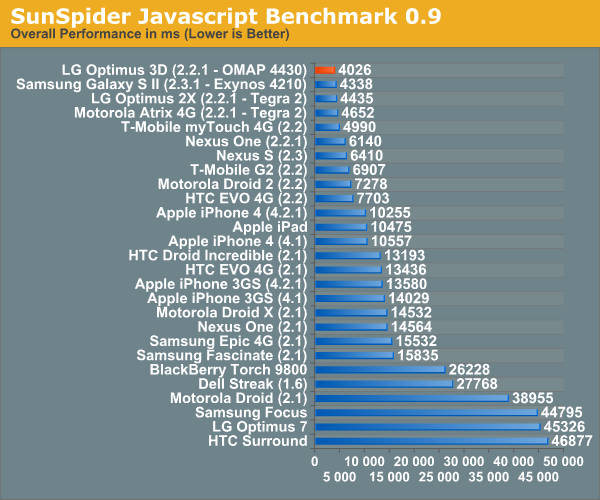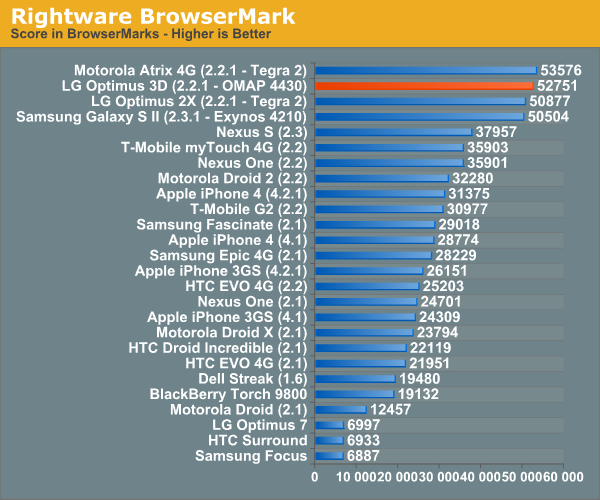CPU Breakdown
The first Android devices such as the G1 and Hero featured the same 528 MHz ARM11 Qualcomm processor. The ARM11 is a previous generation that has quickly lost its luster as more manufactures moved to the ARM Cortex-A8 based SoCs. The mainstream chipsets in 2010 were mostly based off a similar ARM Cortex-A8 architecture, but each one has been tweaked to offer unique features. In the last few months however new SoC have been introduced utilize the latest and greatest ARM Cortex-A9 processor such as the NVIDIA Tegra 2 and OMAP 4.
With the jump from ARM11 to ARM Cortex-A8 there was a huge improvement in performance. Similarly the ARM Cortex-A9 should provide a similar boost over the aging Cortex-A8 thanks to its out-of-order execution pipeline and being capable of executing more operations per clock. Each ARM CPU architecture generation ARM11 -> Cortex-A8 -> Cortex-A9 has led to a vast performance improvement.
At the same frequency a a Cortex-A8 will destroy the ARM11 CPU. Likewise a Cortex-A9 will dominate the Cortex-A8. Again, frequency is not as important as the actual efficiency and total work a CPU can accomplish in a given clock cycle.
| ARM CPU Specifications | |
| CPU | Feaures |
| ARM11 | 1.2 DMIPS per MHz (Dhrystone MIPS) Frequency of 528-600 MHz 8-stage pipeline 90nm process technology |
| ARM Cortex-A8 | 2 DMIPS per MHz (Dhrystone MIPS) Frequency from 600 MHz to 1 GHz In-order execution pipeline 13-stage pipeline 65/45nm process technology |
| ARM Cortex-A9 | 2.5 DMIPS per MHz (Dhrystone MIPS) Frequency up to 2 GHz Out-of-order execution pipeline NEON SIMD instruction set extension (OMAP 4) High performance VFPv3 Floating Point Unit (Tegra 2) 9-stage pipeline Support for up to 4 cores 40nm process technology |
CPU Benchmarks
Here are some benchmarks that can put these specifications in perspective. The TI OMAP 4 and NVIDIA Tegra 2 are far ahead thanks to their integrated ARM Cortex-A9 CPUs.





